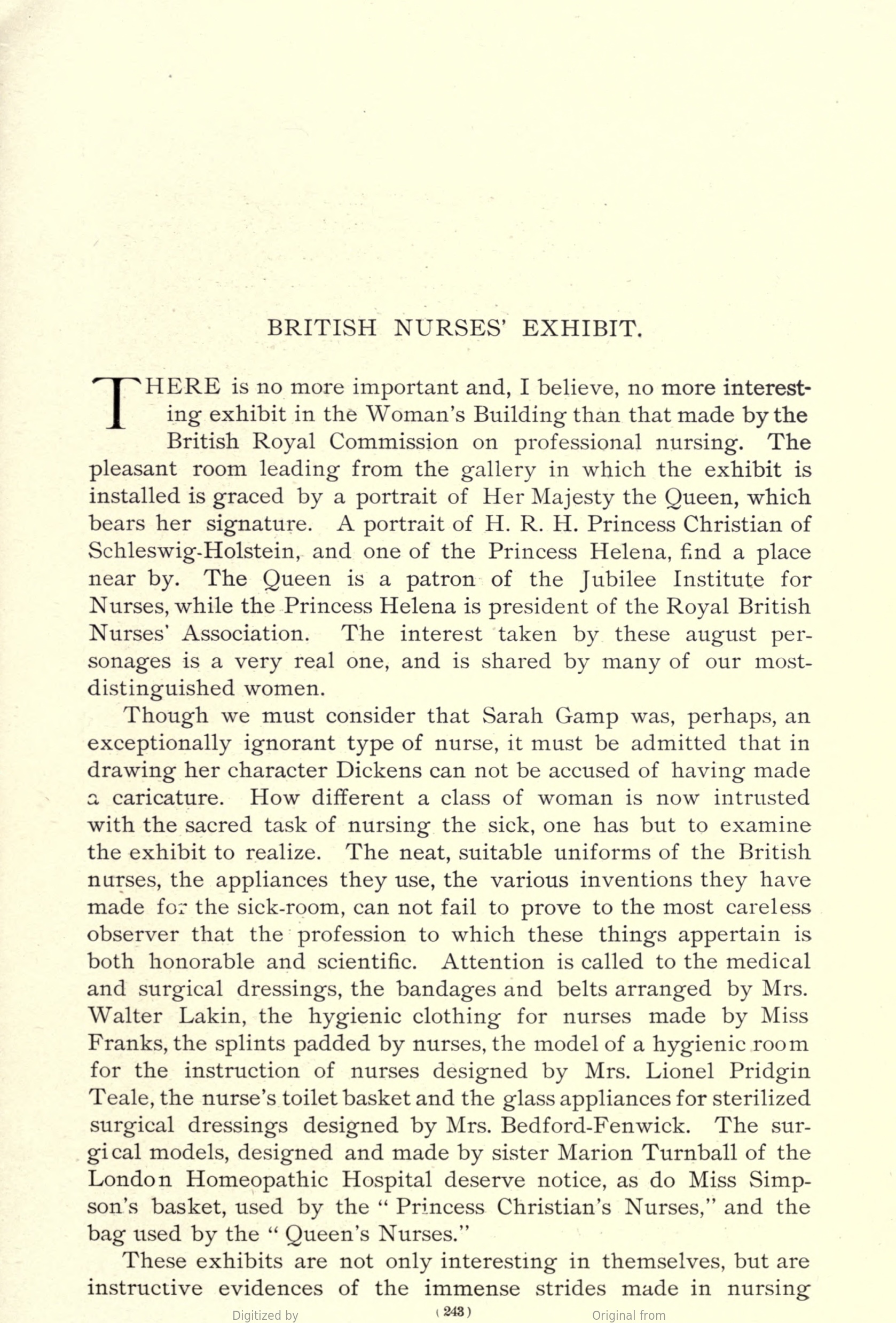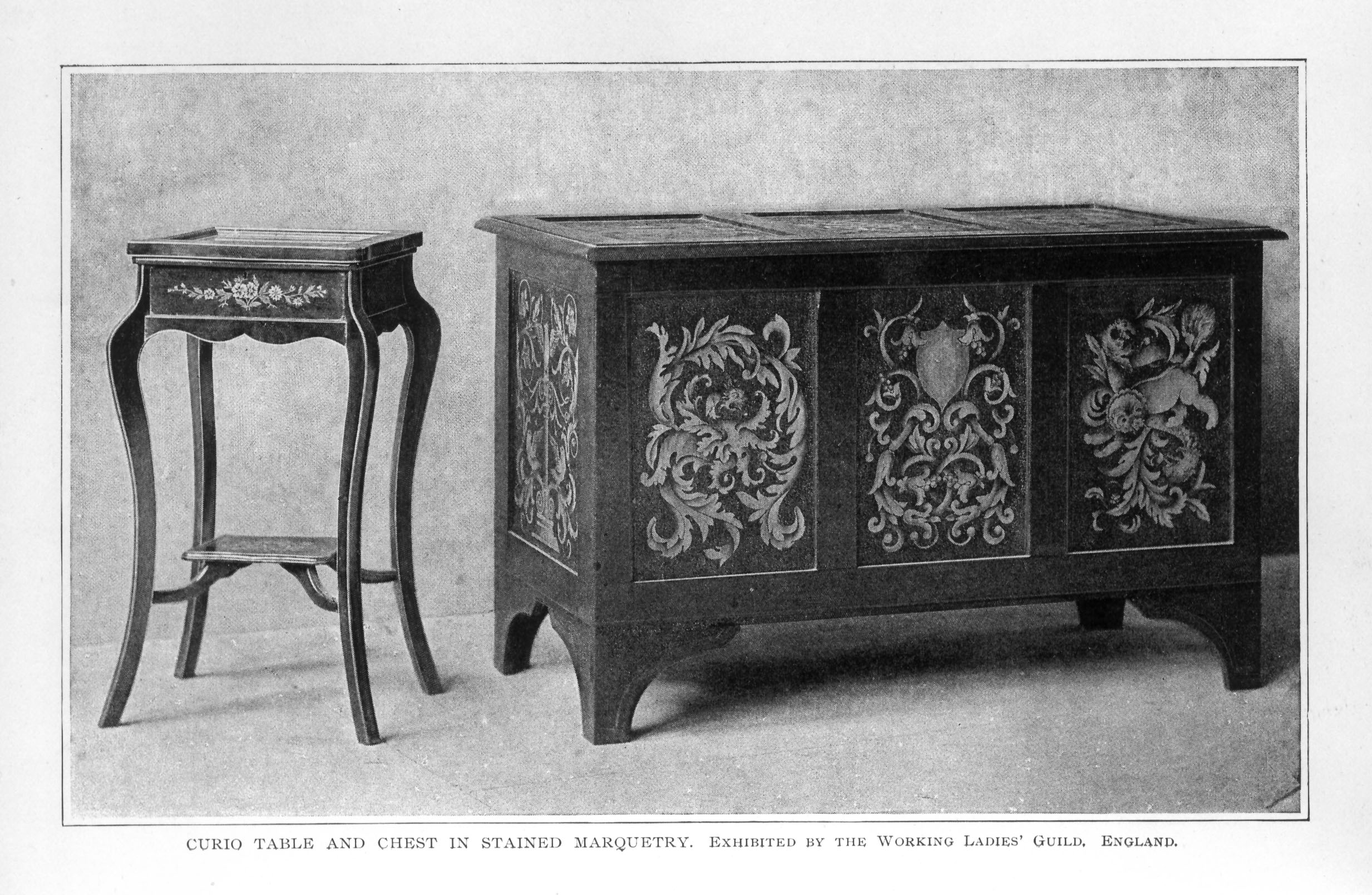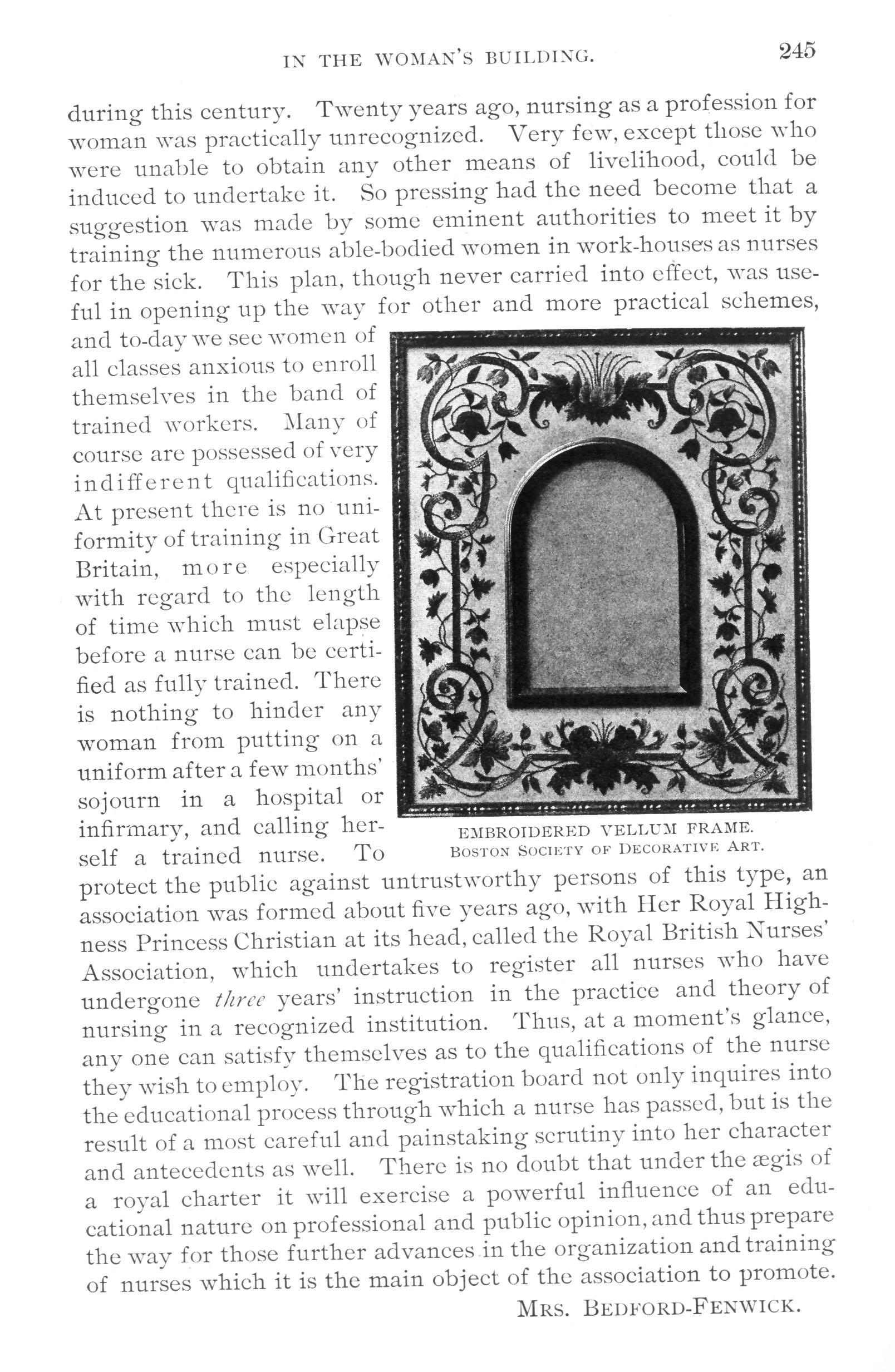
BRITISH NURSES' EXHIBIT.
THERE is no more important and, I believe, no more interesting exhibit in the Woman's Building than that made by the British Royal Commission on professional nursing. The pleasant room leading from the gallery in which the exhibit is installed is graced by a portrait of Her Majesty the Queen, which bears her signature. A portrait of H. R. H. Princess Christian of Schleswig-Holstein, and one of the Princess Helena, find a place near by. The Queen is a patron of the Jubilee Institute for Nurses, while the Princess Helena is president of the Royal British Nurses' Association. The interest taken by these august personages is a very real one, and is shared by many of our most distinguished women.
Though we must consider that Sarah Gamp was, perhaps, an exceptionally ignorant type of nurse, it must be admitted that in drawing her character Dickens can not be accused of having made a caricature. How different a class of woman is now intrusted with the sacred task of nursing the sick, one has but to examine the exhibit to realize. The neat, suitable uniforms of the British nurses, the appliances they use, the various inventions they have made for the sick-room, can not fail to prove to the most careless observer that the profession to which these things appertain is both honorable and scientific. Attention is called to the medical and surgical dressings, the bandages and belts arranged by Mrs. Walter Lakin, the hygienic clothing for nurses made by Miss Franks, the splints padded by nurses, the model of a hygienic room for the instruction of nurses designed by Mrs. Lionel Pridgin Teale, the nurse's toilet basket and the glass appliances for sterilized surgical dressings designed by Mrs. Bedford-Fenwick. The surgical models, designed and made by sister Marion Turnball of the London Homeopathic Hospital deserve notice, as do Miss Simpson's basket, used by the "Princess Christian's Nurses," and the bag used by the "Queen's Nurses."
These exhibits are not only interesting in themselves, but are instructive evidences of the immense strides made in nursing

CURIO TABLE AND CHEST IN STAINED MARQUETRY.
EXHIBITED BY THE WORKING LADIES' GUILD.
ENGLAND.

EMBROIDERED VELLUM FRAME.
BOSTON SOCIETY OF DECORATIVE ART.
during this century. Twenty years ago, nursing as a profession for woman was practically unrecognized. Very few, except those who were unable to obtain any other means of livelihood, could be induced to undertake it. So pressing had the need become that a suggestion was made by some eminent authorities to meet it by training the numerous able-bodied women in work-houses as nurses for the sick. This plan, though never carried into effect, was useful in opening up the way for other and more practical schemes, and to-day we see women of all classes anxious to enroll themselves in the band of trained workers. Many of course are possessed of very indifferent qualifications. At present there is no uniformity of training in Great Britain, more especially with regard to the length of time which must elapse before a nurse can be certified as fully trained. There is nothing to hinder any woman from putting on a uniform after a few months' sojourn in a hospital or infirmary, and calling herself a trained nurse. To protect the public against untrustworthy persons of this type, an association was formed about five years ago, with Her Royal Highness Princess Christian at its head, called the Royal British Nurses' Association, which undertakes to register all nurses who have undergone three years' instruction in the practice and theory of nursing in a recognized institution. Thus, at a moment's glance, any one can satisfy themselves as to the qualifications of the nurse they wish to employ. The registration board not only inquires into the educational process through which a nurse has passed, but is the result of a most careful and painstaking scrutiny into her character and antecedents as well. There is no doubt that under the ægis of a royal charter it will exercise a powerful influence of an educational nature on professional and public opinion, and thus prepare the way for those further advances in the organization and training of nurses which it is the main object of the association to promote.
MRS. BEDFORD-FENWICK.